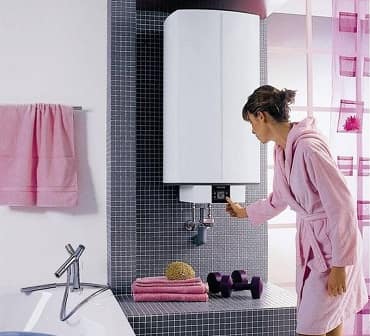 On the market for electric water heaters, storage models (boilers) are beyond competition, so we'll talk about them. Accumulative water heaters are electrical appliances that are designed to automatically heat domestic water to a temperature of 55-75 degrees. In short, such a device is called a boiler, and it consists, in principle, of 2 elements - an electric heating element and a water tank. But the mounting (installation) of different models is significantly different.
On the market for electric water heaters, storage models (boilers) are beyond competition, so we'll talk about them. Accumulative water heaters are electrical appliances that are designed to automatically heat domestic water to a temperature of 55-75 degrees. In short, such a device is called a boiler, and it consists, in principle, of 2 elements - an electric heating element and a water tank. But the mounting (installation) of different models is significantly different.
- What makes storage water heaters better than instantaneous water heaters?
- The main disadvantages of storage water heaters.
- How to choose a storage water heater?
- Algorithm for connecting an electric water heater
- Features of connecting a flowing electric water heater
- Tips for the correct operation of an electric water heater
Why are storage water heaters better than flowing ones?
The most important advantage of boilers over flowing heaters is their simple installation, they can be hung on the wall in the immediate vicinity of the hot water intake points. And since there is always a supply of hot water in the boiler (depending on the volume of the tank), hot water is always at hand and you do not need to wait long until it enters the tap, as is the case with an instantaneous heater. The fact is that flow-through heaters require much more stringent conditions for connection and requirements for the location, and their installation should be trusted only by specialists.
It is not always possible to hang them where you want - but you always want to be closer to the tap, so that you do not have to drain cold water from the tap for a long time while hot water runs. But this is both the additional waiting time, which is annoying, and the uneconomical consumption of resources - drinking water and electricity. In addition, the storage water heater does not react at all to drops or lack of pressure in the water supply system, which is very important for the normal operation of the instantaneous water heater. That is why unpretentious storage water heaters traditionally remain leaders in sales, especially since their installation can be done independently.
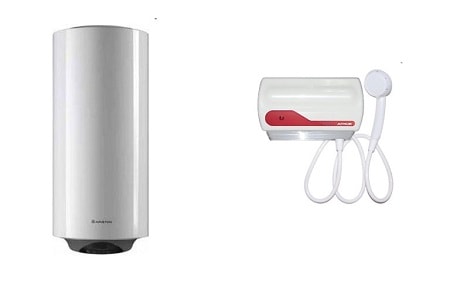
The main disadvantages of storage water heaters.
No matter what type of energy the boiler works on, it will always have three drawbacks:
- The necessary reserve of time for heating water at full consumption of hot water from the tank. Depending on the volume of the tank, it may take an hour or more, the minimum time is 20 minutes. That is, two people will not be able to take a shower one after the other, they will have to pause.
- The impressive size of the tank, which definitely requires space.
- If the heating is turned off, the water in the tank quickly begins to deteriorate, and before using it, it must be replaced, or the tank must not be turned off, then when heated, all bacteria are killed by the high temperature.
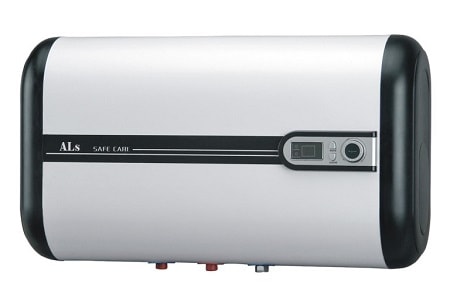
How to choose a storage water heater?
Three main selection criteria:
- The family's need for hot water, it is calculated from the norm of 40 liters per day per person. Bathroom lovers should know that it requires 120 liters of hot water one time.
- The power consumption and compliance with this power of the home power grid,
- Availability of sufficient free space to accommodate a tank of a certain size. It should be remembered that the outside of the boiler is always larger than the inside - after all, the obligatory insulation of the walls gives volume.
Additional selection criteria:
- Is there a circuit breaker in the boiler.
- Is there protection against overheating?
- The water tank must be made of stainless steel (food or medical), the inner surface of bio-glass porcelain prevents water damage.
- Whether the copper heating element has a nickel plating corrosion protection.
- The material for thermal insulation must be environmentally friendly.
- Is there a half power function to save electricity.
- Availability within reach of service centers and manufacturer's warranty.
![]() See also - How to connect the boiler to the mains correctly?
See also - How to connect the boiler to the mains correctly?
So, the storage water heater has been selected, purchased and brought home. How is the correct connection of the storage water heater already in place? Of course, it is better to entrust this business to a specialist plumber, but in principle, there is nothing difficult in this and everything can be done independently.
Before connecting the electric heater to the water supply system and the electrical network, you need to carefully study its instructions and understand its structure. There are four main elements in an electric water heater - a water tank, an anode as a heating electric element, and a safety unit that prevents mixing of already heated water and incoming cold. At the bottom of the boiler there is a safety valve for draining water at overpressure (overheating).
The first step is to check the strength of the walls, whether they are able to withstand the entire mass of a tank filled with water, and from this choose fasteners. If the walls are weak, it is better to initially choose floor-standing water heaters, although they work slower than vertical hinged ones. Next, you should see in what places the water supply is located in the tank and how to rationally ensure the connection, at what height the tank should be placed.
If you do not have a central water supply and cold water is taken from a well or a well, you need to put a separate filter before entering the tank. It is not included in the package, and you need to buy it separately. Before attaching the water heater, you need to take care of where the water will drain from it; you may have to install a tray with a drain pipe to drain into the sewer.
Algorithm for connecting an electric water heater
- We fix the boiler to the wall. Heaters over 50 l can only be hung on strong load-bearing walls. The mount (sold separately) is screwed to the wall with heavy duty anchor bolts. The tank itself is hung on hooks, for vertical models for 30-100 liters, 2 hooks are enough (180 mm apart), for horizontal models for 50-200 liters - 4 hooks are required.
- A safety valve must be put on the branch pipe, which is responsible for draining excess water, while ensuring absolute tightness using fum tape or other means. It is necessary to tighten the valve gently without pinching so as not to break it. This is an obligatory element, because the operation of the water heater without a safety valve is strictly prohibited.
- If necessary, attach a water filter.
- You can only connect to the water supply using flexible pipes, usually metal-plastic or copper pipes.
- After connecting the inlet tube, the outlet is also mounted, going to the hot water tap.
- The tap opens, the tank is filled with water, while in the mixer you need to open the hot water tap until water flows out of it (the tank is full). If there is no water supply, then the water heater must be connected to the storage tank, which should be located at a height of 5 meters and above.
- When the inlet and outlet pipes of the water supply are connected and their tightness is checked, it is time to connect the electric wires with exact phasing.
- The next step is to connect the ground wire, without which the operation of the boiler is also prohibited.
- Do-it-yourself water heater installation ends by closing the protective cover, now you can turn on the heater in the electrical network.
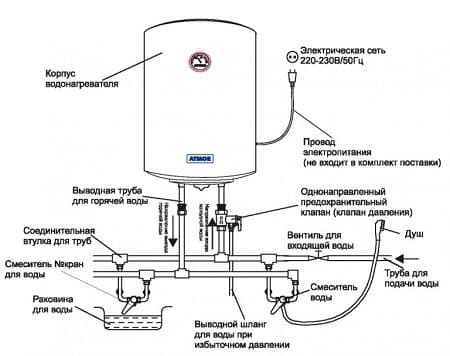
Features of connecting a flowing electric water heater
As mentioned above, water heaters of this type are very demanding on the pressure in the water supply system (it must be even and at a sufficient level, as in city central water supply systems). They also need special wiring. Most likely, you will need to connect the third phase. To understand all these nuances, you need to have an appropriate education, because connecting a flowing water heater is a task only for professionals.
And most importantly, it should be remembered that the instantaneous electric heater, due to the high speed of water movement, is simply not able to heat the water by more than 20 degrees. Thus, if ice water from a well or well is supplied to it, it will not be able to heat it even to a warm state, let alone a hot one.
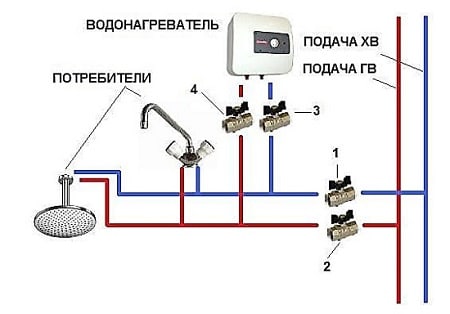
Tips for the correct operation of an electric water heater
Remember that the water from the boiler is, in principle, not suitable for use in food. If you are the lucky owner of a two-phase meter, then to save electricity, you can turn on the heating only at night. Manufacturers recommend changing the heating element annually, although this can be done less frequently.
During operation, it is advisable to set the power regulator to 80%, not more. If you leave home for several days, the tank should be emptied of water and disconnected from the mains. This is especially important if the tank is located in an unheated room in winter. If the water freezes, an expensive electric water heater will hopelessly fail.
See also:

